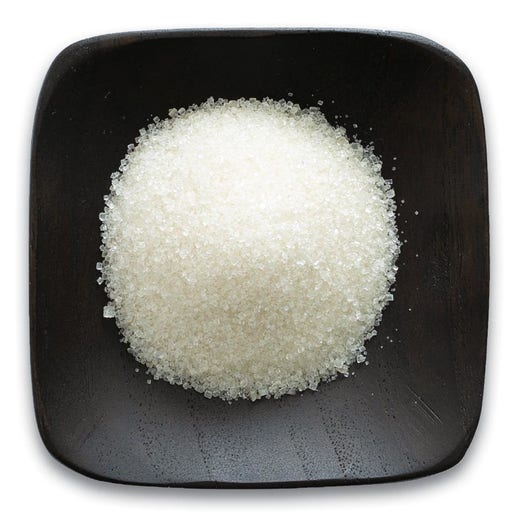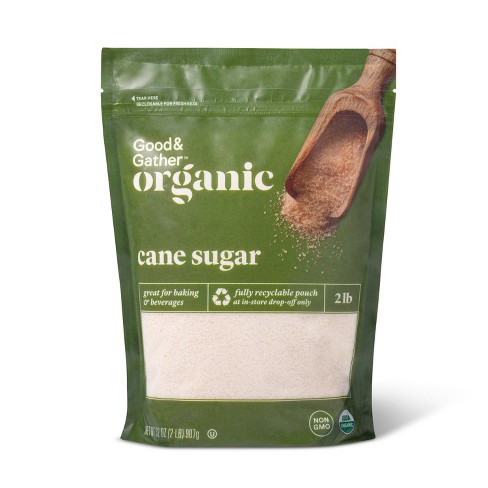Cane Sugar Processing: Innovative Techniques for Quality Production
Cane Sugar Processing: Innovative Techniques for Quality Production
Blog Article
An In-Depth Guide to the Environmental Effect and Sustainability Practices in Walking Cane Sugar Handling
The ecological impact of cane sugar processing presents a complex variety of difficulties that warrant mindful examination. From soil degradation and extreme water usage to the carbon footprint associated with growing and production, the repercussions of standard methods are significant. On the other hand, the fostering of ingenious sustainability procedures supplies a pathway toward much more accountable manufacturing techniques. Comprehending the interaction in between these problems is vital for stakeholders in the market. What certain methods can be carried out to strike an equilibrium between efficiency and environmental stewardship? The answers hinge on a more detailed check out both the difficulties and prospective solutions.
Review of Cane Sugar Handling
Cane sugar handling includes a series of methodical steps that change sugarcane into polished sugar. Initially, gathered sugarcane is carried to refining facilities, where it undertakes cleaning up to get rid of soil and particles. Following this, the walking stick is squashed to draw out juice, which is after that cleared up by getting rid of pollutants via heating and the enhancement of lime.
The clarified juice undertakes evaporation, where water is gotten rid of to concentrate the sugar content. This concentrated syrup is then taken shape through air conditioning, permitting sugar crystals to form. These crystals are divided from the continuing to be syrup using centrifugation, causing raw sugar. To achieve polished sugar, the raw item undergoes additional filtration processes, which may consist of filtering system and cleaning to eliminate staying contaminations and color.
The final product is then dried and packaged for circulation. Throughout this whole process, keeping performance and quality control is crucial to guarantee the sugar satisfies sector criteria. Each action in walking cane sugar handling not just adds to the end product however likewise has effects for source usage and waste generation, establishing the phase for conversations on sustainability and ecological influences connected with sugar production.
Environmental Challenges of Production
The production of walking stick sugar provides a number of considerable ecological obstacles that warrant focus. One primary issue is the substantial usage of agrochemicals, consisting of chemicals and plant foods, which can bring about soil destruction, biodiversity loss, and contamination of local water resources. The drainage from sugarcane areas usually lugs these chemicals right into close-by ecological communities, interfering with water life and impacting the health and wellness of communities reliant on these water bodies.
Another obstacle is the high power usage related to sugarcane processing. The boiling and refining phases need considerable heat, largely created by shedding nonrenewable fuel sources, contributing to greenhouse gas discharges. Additionally, the large acreage needed for sugarcane cultivation can bring about logging and habitat devastation, additional intensifying environment modification and threatening wild animals.
Furthermore, the labor techniques in some areas raise moral issues, as employees may face inadequate working problems and poor earnings. This scenario usually bolsters a cycle of hardship in regional areas. Cane Sugar Processing. Attending to these environmental difficulties is essential for creating more sustainable practices in cane sugar manufacturing, ultimately profiting both the environment and the areas associated with this market
Water and Land Usage Effect
Water sources and land utilization are important components in the cane sugar market that considerably influence the environment. The growing of sugarcane needs significant water input, with estimates suggesting that it can eat up to 2,000 liters of water per kg of sugar generated. This intensive use of water usually results in deficiency of neighborhood water resources, affecting not only the sugarcane plantations however additionally bordering environments and areas that count on the same water sources for agriculture and domestic use.

In addition, land use for sugarcane farming can cause deforestation and the conversion of all-natural habitats right into monoculture ranches. This technique reduces biodiversity, disrupts regional ecosystems, and adds to soil deterioration. The development of sugarcane fields usually trespasses on beneficial agricultural land, producing competitors for resources in between food and biofuel manufacturing.
Sustainable methods, such as maximizing irrigation methods and implementing crop turning, are important to reduce these influences. By adopting a lot more reliable water usage and land administration approaches, the cane sugar market can minimize its eco-friendly footprint, making certain an equilibrium between agricultural performance and ecological preservation.
Greenhouse Gas Emissions
Greenhouse gas discharges stand for a substantial environmental worry within the walking cane sugar handling sector, particularly as agricultural methods broaden to fulfill international need. The farming of sugarcane, a crop that flourishes in tropical climates, depends greatly on synthetic fertilizers and pesticides, which contribute to laughing gas exhausts. In addition, land-use adjustments, including deforestation for new sugarcane plantations, launch carbon dioxide stored in plant life and dirt.
During processing, power usage is an additional significant source of greenhouse gas emissions - Cane Sugar Processing. Many sugar mills utilize nonrenewable fuel sources to power equipment and produce heat, causing substantial carbon footprints. Moreover, the transport of raw sugarcane and finished items adds layers of emissions via fuel combustion in lorries
The collective impact of these emissions aggravates environment change, presenting risks not just to the atmosphere but likewise to the long-term stability of the market. Stakeholders should identify the immediate need for thorough techniques that deal with these exhausts. This involves evaluating present farming techniques, processing approaches, and transportation systems to recognize areas for renovation and mitigation. Addressing greenhouse gas discharges is important for fostering an extra sustainable walking stick sugar market in a transforming climate.

Lasting Practices and Innovations
Sustainable practices and technologies are progressively important in the cane sugar processing industry check these guys out as stakeholders look for to decrease environmental effects while maintaining performance. One considerable advancement is the execution of integrated plant administration, which maximizes resource usage by integrating soil monitoring, bug control, and crop rotation strategies. This technique enhances return while minimizing chemical inputs and protecting dirt health and wellness.
Moreover, the adoption of renewable energy resources, such as biomass from sugarcane residues, has actually gotten grip - Cane Sugar Processing. By converting waste items into energy, refining facilities can decrease their dependence on fossil fuels, consequently lowering greenhouse gas discharges
Water monitoring techniques have likewise seen renovations through the recycling check over here and reusing of water in handling plants, significantly decreasing freshwater intake. Innovations in innovation, such as accuracy farming, enable farmers to keep an eye on plant health and resource usage better, ensuring sustainable growing techniques.
In addition, certification programs like Fair Trade and Jungle Partnership motivate eco liable farming practices and promote social equity within the supply chain. By embracing these sustainable practices and developments, the walking stick sugar processing market can improve its durability and add favorably to ecological stewardship.
Final Thought
The ecological effect of walking stick sugar handling provides considerable difficulties, including soil degradation, high water consumption, and greenhouse gas emissions, alongside moral concerns related to labor techniques. Resolving these concerns via lasting methods, such as integrated crop management, eco-friendly power adoption, and water recycling, is vital. By promoting socially fair and ecologically responsible techniques in sugar production, the sector can alleviate its negative impacts, ensuring a more lasting future for both neighborhoods and communities involved in this field.
Walking stick sugar processing entails a collection of systematic actions that transform sugarcane into polished sugar. Each action in walking cane sugar handling not only adds to the final item however additionally has ramifications for resource usage and waste generation, setting the phase for discussions on sustainability and ecological effects associated with sugar manufacturing.
Greenhouse gas emissions stand for a significant ecological issue within the walking cane sugar processing sector, especially as farming methods increase to satisfy international demand.Lasting practices and technologies are progressively essential in the walking stick sugar handling industry as stakeholders look for to reduce ecological influences while preserving performance.The environmental effect of cane sugar handling presents considerable obstacles, including dirt destruction, high water usage, and greenhouse gas exhausts, alongside honest problems related to labor Recommended Reading methods.
Report this page